Love garlic? Learn How To Grow Your Own Garlic here (it's easy!). And you'll find links to my favorite recipes that call for garlic at the end of this post, along with links to other garlic growing posts.
Freshly harvested green garlic (on the mature side) that's been cleaned, trimmed, and is ready for cooking.
Realization of the Day:
Garlic is a lot hardier than I thought.
Green garlic, also known as spring garlic, young garlic, baby garlic, and garlic shoots, is simply an immature garlic plant. It's milder and sweeter than mature garlic, with a wonderful flavor.
The green garlic pictured above is on the mature side. I've never seen green garlic for sale here in rural Missouri, but in photos I've seen of green garlic, such as
this one and
this one, the bulbs haven't started forming, and it bears a closer resemblance to scallions or baby leeks. It's edible at any stage.
Green garlic season starts as early as February in places with mild winters, like the San Francisco Bay Area, and has come and gone here in Missouri, but green garlic must still be available in some places because
my spring green garlic post is still showing up as one of the ten most popular posts on In My Kitchen Garden this week. (The weekly top ten posts are listed in the left sidebar of every
In My Kitchen Garden page).
6/24/11 Update: Today's weekly e-mail newsletter from the Center for Urban Education about Sustainable Agriculture (CUESA) reports that the green garlic season is 'winding down' at the San Francisco Ferry Plaza Farmers Market.
Look for green garlic at farmers' markets, in your CSA subscription box, or try growing some yourself.
Like with onions, you can grow green garlic in zero extra garden space by double planting your garlic and then thinning it out by harvesting half of it when it's young.
I accidentally missed green garlic season this year. Early last fall, volunteer garlic plants began sprouting up in the bed where I'd harvested the 2010 garlic a few months earlier because I'd left some of it in the ground while digging. Sometimes it pays to be sloppy.
More info and photos below. . .
When I seeded that bed with
several kinds of Asian greens in September (which did really well, though I should have thinned them more aggressively), I simply planted around the sprouted garlic. My plan was to harvest it as green garlic if the plants got big enough before the cold weather hit, but they never did, so I simply left them in the ground.
Overwintered volunteer garlic on 3/1/11
Despite not being mulched or tended to, about three dozen volunteers—some of which had already grown about 8 inches high during the fall—survived winter temperatures down to —10°F just fine and began growing like crazy come spring. A few of the tips turned brown, but no real damage was done. This volunteer garlic has actually done better than the pampered cloves I planted last fall (
on time for once!).
Where entire heads of garlic had been left whole in the ground, each individual clove sprouted, and the plants were very crowded. I figured they were growing too close together to properly mature, so I would dig those up early as green garlic. But then suddenly—as seems to happen in the spring garden—I turned around and they were already huge.
One bucket is headed for the compost pile, the other is for rocks (4/5/11)
On April 5th, I weeded the garlic bed and scattered a $2.00 farm store impulse purchase packet of organic Parris Island Cos romaine lettuce seeds over about two-thirds of it.
5-4-11
While making perfect use of this otherwise empty space, I discovered a new favorite variety of extremely heat tolerant lettuce.
Ten days later, on 5/14/11. The clothespins and bamboo stakes are for shading the lettuce with an old bed sheet. Read more about shading your plants here.
I didn't think whole heads would form in such close quarters, but they did. I harvested all the volunteer garlic on Saturday, June 18th, and it looks great.
After 17 years, this
Korean Style Hand Plow, also called an
EZ Digger, is still my favorite all around gardening tool, and the only thing I use to dig up garlic. I own two because I lost one once and went immediately crazy without it, then found it a year later. I use them for everything from weeding to seeding. Lately I've had my eye on
this long handled version.
Bounty! Garlic for eating and planting, lots of compost-to-be (aka weeds), enough still tasty, hidden lettuce for a small salad, and more room for planting.
I still have a hankering for some green garlic, so I'm going to try planting some of these fresh cloves right now. I read once that you can grow green garlic in summer, and although my 2006 attempt didn't work out very well (mostly, I think, because the cloves were tucked in beds with big tomato plants and ended up too shaded), I'm ready to try again.
The taste of green garlic is worth it.
Do you ever grow green garlic? When do you usually harvest it? Any growing tips or favorite green garlic recipes?
More garlic growing posts:
What I like to make with fresh garlic? All kinds of things!
SOUPS
LAMB RECIPES


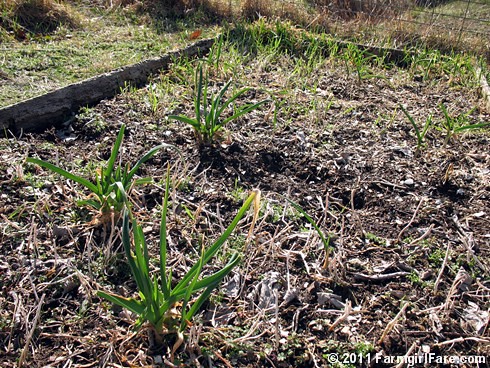
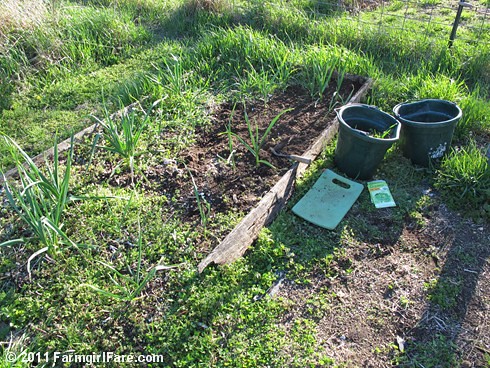
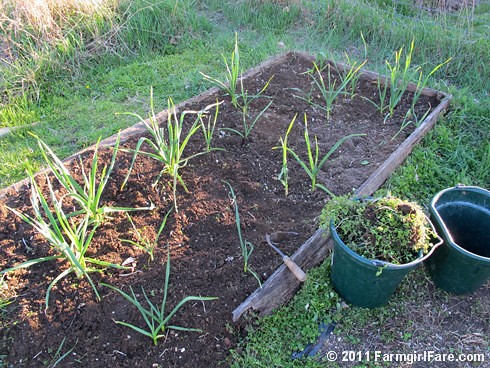
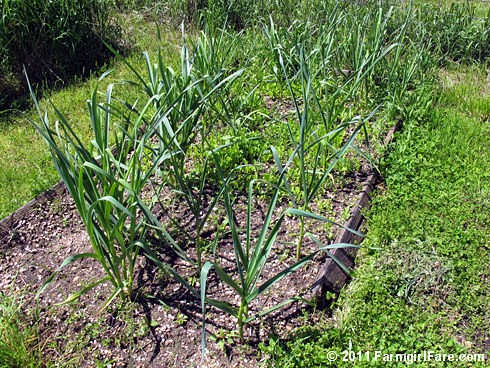
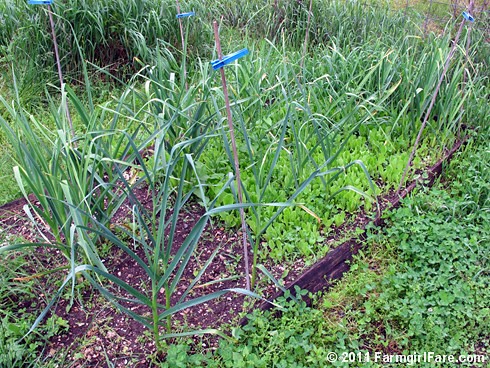
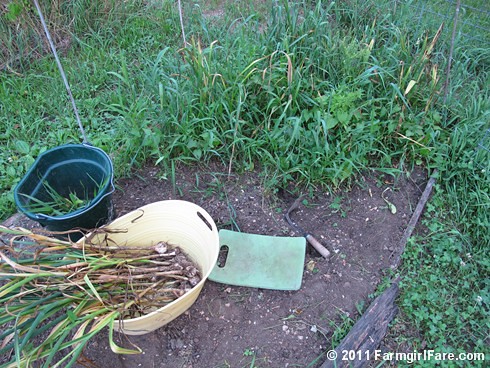
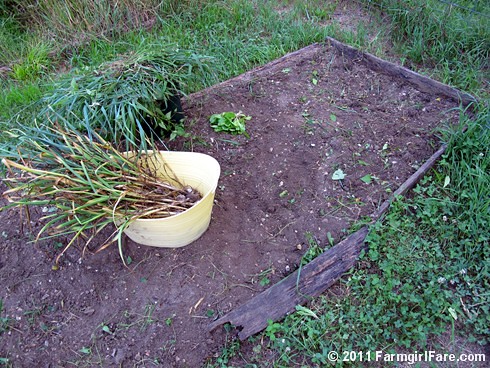
Interesting!
ReplyDeleteI know that the recommendation is to not plant the smallest of bulbs, but next year, I am going to interplant them with large ones. They won't make a big head and will be excellent for thinning out and green garlic harvests throughout winter and spring. If you plant enough, you'll never have to buy store bought garlic again!
I haven't used green garlic as such, but I have used the early green tops in scrambled eggs. I'm hoping to be able to dry some of the bulbs this year too - I finally figured out the softneck/hardneck difference!
ReplyDelete